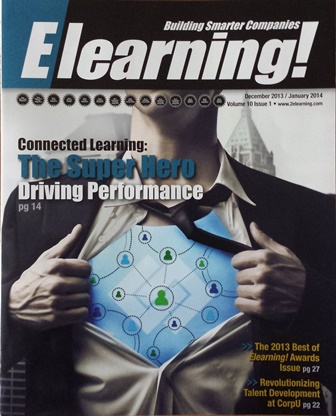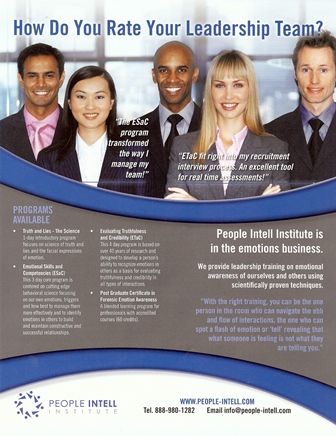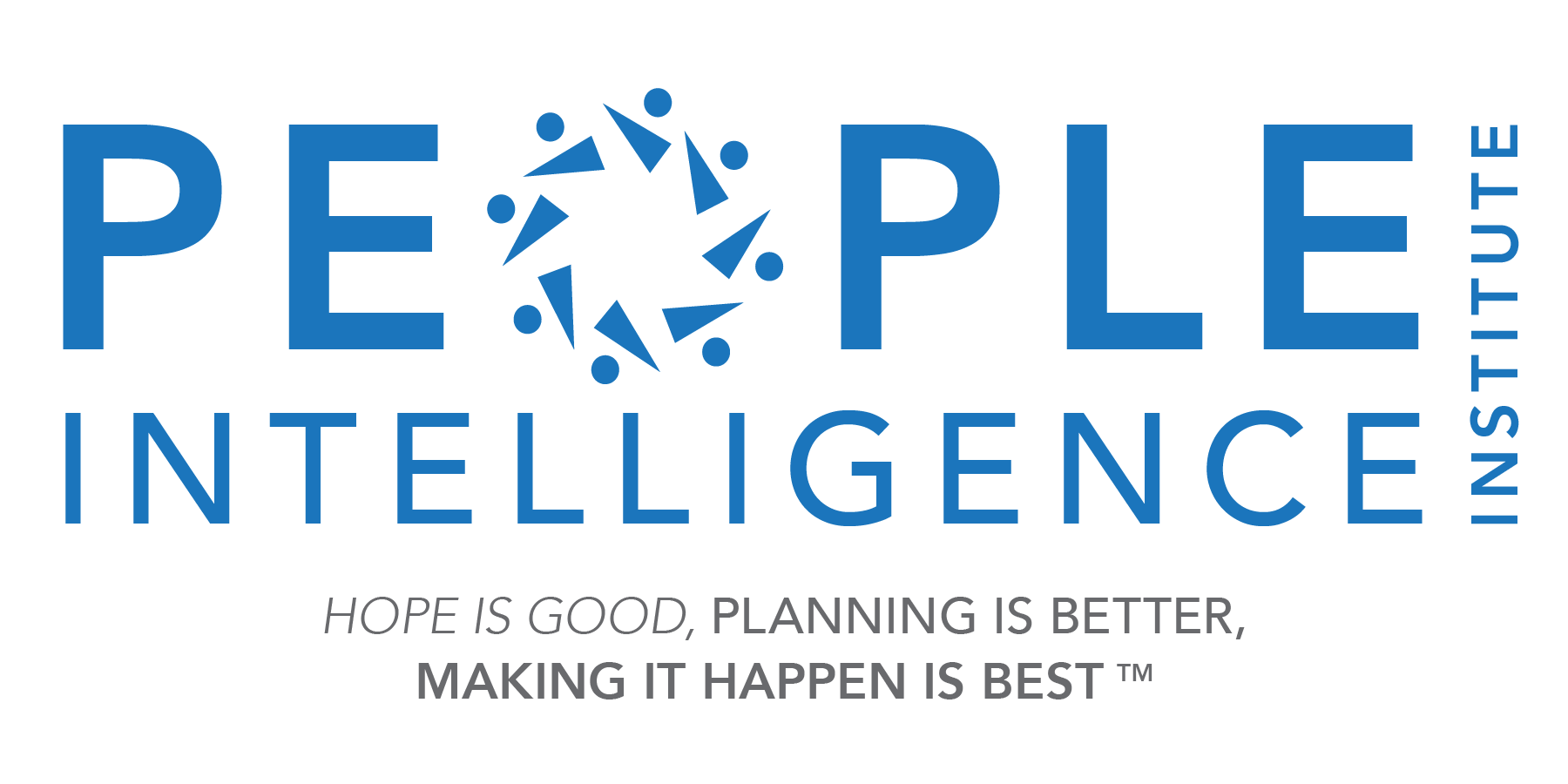"This course has helped train my eye and my mind to see more emotions in others, and as a result, have more successful interactions with others when they are emotional. I am more likely to notice things earlier, before escalation, when the potential to make better choices is stronger."
Read MoreThe Mindsets of Sustainable Leadership

Once upon a time in West Africa, people shared information through drums. News travelled from village to village across the savannah as a single, unique and recognizable rhythm. Though the drum is still used today as a tool for communication in West Africa, times have certainly changed. Today talking drums have gone viral and the human race now has myriad ways to access, process and share information. There is no doubt: technology has arrived and technology is changing our world.
Today, the avenues for receiving and sharing information have expanded exponentially, changing the way we live, work, play, interact with each other and interact with our world. Within the last decade, the arrival of technology has significantly disrupted the way businesses are run: the internet has become a resource for creating conversation, shaping opinions and instigating change. Technology has placed the proverbial talking drum in the hands of the masses and is playing a fundamental role in shifting the dynamics of power across sectors and regions of the world.
The "command and control" style of leadership, whose roots run deeper into history than the rule of Julius Caesar is being challenged every day. This shift in power dynamics means savvy leaders seeking to drive sustainable change and create significant impact in their sectors must shift their mindset.
The concept of sustainable leadership, as defined by Dr. John Bowling, "behaviors, practices, choices and decisions that focus on a long term view rather than a short term view" (personal interview, Oct. 10, 2012) is one that demands a shift from traditional leadership styles and thinking. The seven mindsets of sustainable leadership, a concept developed by Steve Schein and John Bowling, is a tool leaders may use to organize themselves around the key perspectives, actions, and behaviors necessary to lead with a long term view in todays' rapidly changing and increasingly connected world. The seven mindsets are accountability, adaptability, collaborative communication, creativity, renewal, strategic alignment, and transparency. These concepts ebb and flow about each other, meld and inform each other, but also offer unique perspectives that can inform and educate the leaders of today who are interested in seeing success tomorrow.
Among the most transformative and game-changing mindsets facilitated by the advent of technology is transparency. Transparency inspires trust and trust is an essential ingredient to success. In business, consumers must trust that the product or service being offered is valued. In development, funders need to trust that the money they invest will achieve the desired effect. As individuals, we place trust in our leaders to make the right decisions and not lead us into harm. Steve Schein explains this concept by saying "we find that the more open and honest we are with those around us, the more powerful our words and actions become, especially in times of stress" (personal interview, October 8, 2012).
A leader who is transparent about his or her motivations and vision for the future will be better able to harness the trust and engagement of his or her followers. But being open and clear about the positive elements of a leaders' vision is not enough. In order to gain trust, leaders must also be open about their weaker sides. Being a leader inherently means making choices and not every single choice a leader makes is going to be the right one. Leaders who are willing to address mistakes candidly are not only more apt to gain the trust of their followers, they are more likely to harness learning from those experiences. If leaders can be authentic and open about their whole self, including vulnerabilities and weaknesses, people will be able to identify better with them, and make informed decisions about whether or not to follow.
The time of listening for the beat of a drum to learn the news of our distant peers is long gone, but our need for connection and communication is still great. Through openness and transparency, leaders have the opportunity to generate trust and increase value. Balancing the evolution of technology, while embracing transparency along with the other mindsets of sustainable leadership will help leaders develop long term powerful impacts that get to the root of some of the world's most pressing challenges and opportunities.
—Shey Yearsley, reprinted with permission.
Image courtesy of nuchylee/ FreeDigitalPhotos.net
Taking One for the Team
What you could achieve when you are aligned and accountable.
Football season is well underway. Across America, people are cheering for their favorite teams, experiencing their victories and defeats with great emotion and pride. I have never been a football fan, but I recently had the opportunity to participate in a conference, where Brian Dawkins, former safety for the Philadelphia Eagles was one of the keynote speakers. I was not prepared to be impressed with the man whose introduction was a video showing the aggression with which he tackled men twice his size,–but when the man walked on stage and began to talk, I was captivated. I grabbed my pen and started scribbling.
Brian Dawkins embodied in his presence and his speech how sustainable leadership mindsets could shape success: he demonstrated how these mindsets could be so powerful in accelerating performance, both on the field and off of it. He spoke candidly about the ways that accountability and alignment have helped carry him gracefully into life after football. Dawkins was not afraid to about the healthy dose of fear that permeated his pre-game preparations; he described how he would look around the locker room and fear letting his team-mates down. His fear was mitigated by two things: trust that his team mates were prepared their best efforts to the field and knowledge that he had put everything into being prepared and disciplined for that game. His accountability to himself and his teammates contributed significantly to their success on the field. "You have to be accountable to yourself, your heart, and your team" Dawkins explained, helping us understand how his accountability made such an impact because it was so well aligned with his own personal vision and belief.
It is easy to imagine the level of intensity Brian Dawkins brought to his game, just as it is easy to idolize and revere the performance of so many great athletes around the world. Their ability to optimize their strengths and perform at the highest level is one of the reasons we are so drawn to professional sports. But what more could we learn from them? What struck me most about Brian Dawkins was that he was so very human. His approach to life, to success and to performance was one that you or I could adopt just as easily. You don't have to be a pro football player to ask yourself "what is stopping me from accountability to myself, my heart and my team?" You just might surprise yourself with what you could achieve when you are aligned and accountable.
Written by Shey Yearsley reprinted with permission.
What Can Hockey Teach Us About Empathy & Leadership?

Nicholas Evlampios Fotiu was born May 25, 1952. He grew up in the New York city Borough of Staten Island. In July of 1976, Nick signed a contract to play in the NHL for the New York Rangers. He was a former semi-pro boxer who didn't learn to ice-skate until he was a teenager, rare for a player in the National Hockey League, where most have been skating and playing the game since before grade school. He would get up at 3AM, then take two subways and two buses to the hockey rink in New Hyde Park to practice on the rink before reversing the journey home so he could go to work. His tenacity paid off. His toughness may have outpaced his skill level, but he was a local hero to Ranger fans.
Prior to Nick's joining the team, the Rangers were knocked around by the opposition. That changed when they signed Nick. Infamous Hockey tough-guy Dave "The Hammer" Schulz said in his book that Fotiu was the only player in his career who he was scared to fight.
But what endeared Nick to the Ranger fans was not his physical toughness, though that was a big part of it. Fotiu is illustrious around the NHL for a ritual he conducted after the pre-game warm-ups at home games. Nick would skate around the ice, throwing pucks deep into the Madison Square Garden 'Blue Seats', the bleachers high in the arena where the local fans bellowed with enthusiasm. Certainly his fierce checking and willingness to 'drop the gloves' could fire up any game but when Nick threw those pucks up to the Blues, the Garden would rock with enthusiasm, Nick wasn't just pulling a stunt; he was demonstrating empathy. His simple act of kindness, generosity, compassion and the remembering of his roots made him one of the all-time favorite players in Ranger history. Because Nick understood the emotional attachment those fans had to him and the game, he was admired. Nick Fotiu, the moderately skilled, pugnacious hockey player, was an authentic sports hero.
Leadership
Mark 'Moose" Messier is widely considered hockey's greatest captain and one of the best leaders in all of team sports. Mark played for 25 professional seasons in a physically demanding, often brutal sport. He is a Hall of Fame player who won six Stanley Cups and is the only player to be the captain of two championship teams, The NY Rangers and Edmonton Oilers.
In a 1996 Sports Illustrated piece about Messier, Michael Farber said, "...fans in NY think Messier is a typo for Messiah." When Darren Langdon was called up from the minors to play in his first NHL game, he found a Hugo Boss suit hanging in his locker with a note attached, "from the team", that 'team' was Messier. Players and coaches have compared him to Patton, MacArthur and other leaders from history.
So what one word describes his style?
Empathy.
Messier - "To lead, you have to have the trust of the players, and to do that you have to find a way to connect with them, to find common ground with every individual. It's a people issue, not a sports issue. The way to find that common thread is compassion."
For Mark Messier, who now runs leadership camps, it's all about understanding the emotions that can tear a team apart and those required to win, but it's always about the team." When his number was retired he said, "My jersey hanging from the ceiling is going to be a symbol of the hard work of those I played with."
For great leaders empathy is something to be fostered. To ensure this, a leader must be honest and authentic in demonstrating humility or be perceived as a phony. The Hockey Messiah once said, "There were a lot of people that helped me along the way, too many right now to name. But nobody can do it on their own, nobody can win a team sport on their own and nobody can be a leader on their own. And I had unbelievable help along the way."
In 1994, the year the Rangers won the Stanley Cup after a 54-year drought, there came a time the team was in danger of being knocked out of the playoffs. Messier had a private meeting with Coach Mike Keenan after what Messier believed to be an erratic and selfish performance by the coach the night before. To a man players said everything changed after that meeting. No one knows what was said, but the players all believed that meeting changed their destiny. Messier knew what the team needed to win. He understood the emotional drivers of team sports.
"As a captain, I think it's important that the players really know who you are and what you stand for, what your beliefs are, and to be consistent in those if things are going good or things are going bad."
Image courtesy of renjith krishnan/ FreeDigitalPhotos.net
The Architecture of Emotional Competency

"All architecture is a shelter, all great architecture is the design of space that contains, cuddles, exalts or stimulates the persons in that space." - Phillip Johnson
So what kind of space have you created for your employees? Is it one where individuals are physically isolated from one another, making human contact a chore? Are they essentially detached from the process in the place of business, segregated in the name of focus?
The idea that the space is either evocative, inspiring, creative and interactive; or is compartmentalized, inhibitive, cold and foreboding, can speak less to the physical space and more to the leadership that influences the dynamic within that space. The leadership can function as the architects of the kind of space where employees either flourish or whither.
Steven Johnson, in his book, "Where Good Ideas Come From", explains how the coffee houses of 17th-century England fostered the Age of Enlightenment. It was the space - the chaotic, communal atmosphere that lent itself to the emotionally open and honest exchange of ideas. Johnson examines the impact the coffee houses had upon the advancement of western culture and civilization. The coffee houses were the places where ideas could, well, percolate. The best ideas develop over time. They are a bundle of smaller ideas that need time to gestate and a place to be born.
Ideation, the formation of ideas, is a process, like an architectural drawing on a cocktail napkin that becomes a functional piece of art. It begins with free expression. In a space where people feel free to be honest and uninhibited, creativity and innovation will blossom.
The idea of place is not simply about steel and concrete, but about creating an open dialogue. Open space engenders open minds - for ideas, congeniality, innovation and forward-thinking. Just as the principal's office can spark dread in a schoolboy, a work space seen as open to new ideas and truthful human interaction can relieve the stress that stifles imagination.
Eugene Kohn of KPF Architecture spoke about what goes on inside of buildings. "Our goal as architects is to create buildings that inspire people to do whatever it is in that space they need to do. That inspiration comes from within the building as much as from the way it looks from the outside." And so it goes for the attitude projected by management. Are you creating corrals or space to grow?
Architecture in both the practical and artistic sense is a process, indeed the only art form in which the developmental stages (blueprints, drawings, models) are revered along with the finished product. Human interaction is a process of exposition, the testing of ideas and knowledge; its application and review, none of which can happen if employees aren't part of the process and managers aren't attuned to the needs of the work force.
Employees need to feel comfortable in the place and view it as common ground, which will propagate a sense of ownership. In this place, the connections all play a role, as each rivet in the steel supports the structure.
In his elegant book, Why Architecture Matters, Paul Goldberger said, "Architecture is about the making of place, and the making of memory. Architecture gives us joy if we are lucky, and it gives us satisfaction and comfort, but it also connects us to our neighbors, since the architecture of a town or a city is the physical expression of common ground. It is what we share, if only because the architecture of a community is one of the few forms of experience that everyone partakes in: the sharing of place."
The art of architecture is obvious, as is the public face of an organization. But in buildings as well as organizations, the underlying structure supports the mission. Complex interfacing systems keep structures functioning as do complicated human interactions, of which leaders must remain keenly aware. To say the full business process is effective without emotional intelligence is like an architect neglecting an essential structural element. The architect gives equal gravitas to aesthetics and function. It all matters.
Image courtesy of khunaspix / FreeDigitalPhotos.net
Cleaning Out the Attic

Managers often operate under the presumption that emotions have no place at work and they are generally right with regard to financial or economic decisions and operational maneuvers. However, their employees are sentient beings. Emotions and the role they play in the human factor cannot be dismissed.
Whether or not we want to acknowledge them, emotions exist because people exist. They are part and parcel of every person we know. Managers feel they have to be disconnected, so that the detachment can make it easier to make decisions based upon facts, devoid of emotion. That perspective has merits of course but there is a pitfall: the complete repression of all emotions while in work mode. It leads to neglecting emotion in all work-related interactions and can prevent them from 'getting' the human component of the work environment. In short; it interferes with empathy.
Think about the difference empathy makes in our interpersonal relationships - in how we decide to talk to people, how much we decide to listen, how deeply we care. There is an emotional component underpinning every action people take and by tapping in to our emotional intelligence, that enhanced sense of empathy will make us better managers of people. By denying our own emotions we are inhibiting our ability to notice them in others. If we don't understand them, we can't understand motivation, desire, inspiration, commitment and honesty. Is the team really buying into the plan or just paying lip service?
Do you ever feel as though you aren't getting through to people? Have you noticed that employees only come to certain managers with their concerns? Do employees complain at reviews that they don't feel as of they matter? It may be time to clean out the attic...
It's Musty Up Here
Maybe it's time to get up in the attic and dust off your old trophies, read your old journals, sift thru some photos and enjoy the memories, those moments in time that have shaped your life - the laughter, and even the tears. What moments brought you the greatest joy? What single event can still make you feel exhilarated?
How would a trip to the attic make you feel? Might you feel rejuvenated, humble, romantic, artistic and perhaps, human? Your employees feel this way every day and so do their families. The ability to understand how emotions effect change is vital to emotional competency. This competency is an improvable skill those with high EQ possess naturally, but it can be developed with practice.
Some leaders work so hard to remove themselves from emotion in the name of pragmatism they lose the ability to communicate effectively with the very people who can help them make better decisions. They simply forget how to talk to people. The Joe Friday, "just the facts ma'am" approach can leave employees feeling disconnected. That feeling of being under-appreciated or excluded is one of the top reasons for employee discontent.
A trip to the attic can help to find new uses for stored emotions such as confidence, compassion, joy, sadness and connectedness. Revisit Mazlow's Hierarchy of Human Needs ( http://www.maslow.com/) and see how important belonging is. By cultivating empathy, by recognizing and understanding the relevance of emotions in human behavior, leaders can embrace what they find in the attic. They can blow off the dust and put their emotions back in the toolbox, right alongside pragmatism.
Image courtesy of jscreationz / FreeDigitalPhotos.net
Interview on The Bronc - Emotional Intelligence and Awareness

An interview with Mike Palestina on Rider University's "The Bronc."
In an effort to give back each month Mike volunteers his knowledge of career planning and his coaching services to professionals who find themselves in transition due to the current economic conditions. His focus is on building an executable job search strategy that includes practical tips on effective networking, interviewing and negotiation. Mike is regularly invited to speak on these topics across New Jersey at Department of Labor and Professional Services Group events.
"I believe that emotional awareness of ourselves and others and effectively managing those emotions are essential skills required for successful leadership. My position is supported by research conducted by Harvard University, Carnegie Institute of Technology and many others.
The Harvard study concluded that EQ is twice as important as IQ and functional expertise in career success. The Carnegie Institute of Technology study shows that 85 percent of your financial success is due to skills in “human engineering,” your personality and ability to communicate, negotiate, and lead.
Over the last 10+ years I have used emotional awareness and verbal and non-verbal communications to enhance my one-on-one executive coaching and team coaching services."
Listen to Mike discuss the most vital leadership skill...emotional awareness and competencies.
Nov. 10, 2013 http://www.1077thebronc.com/?page_id=356
The Peaceful Deceit
Were you to ask a random sampling of people in your work-a-day world to rate lying as either good or bad, most would say it is a bad thing. It's a simplistically posed question requiring an easy answer.
Asked to elaborate those same people may repeat aphorisms such as:
- One lie leads to another.
- A liar must have a great memory.
- For every lie you tell, you must tell ten more to cover it up.
- "Oh what a tangled web we weave..."
Ask someone if they are a liar and they will bristle. The mere implication of mistrust can damage relationships. "How dare you?"
But what is a lie beyond this simple definition? A lie is the expression of a statement known by the teller to be in some way inconsistent with or in opposition to what one knows to be true. There is no moral judgment in that statement - it only presents a definition. The moral or ethical aspects only come into play when one considers the objective of the deceiver and the intention to harm. The con man, the cheat, the unctuous politician and other scoundrels have all contributed to the association of being a liar with being a reprobate.
There are times however when saying something we know to be untrue seems to be the best option in the moment. Lies are told to conform to social situations - "Yes, the food was delicious." They are told to make someone feel good - "No, that outfit doesn't make you look fat at all."
We often mask our true feelings because we are unwilling to confront what the truth will unveil. So we tell ourselves that we did the right thing by not being forthright, despite the fact, strictly speaking, we told a lie. The French writer Vauvenargues said, “The art of pleasing is the art of deception."
This notion of pleasing brings us to what the title alludes, what social psychologist Irving Janis called "concurrence seeking" in 'groupthink' situations. It is the tendency to seek concurrence (conformance) with a group to finalize what may be a bad decision. No one wants to be seen as the enemy of the group.
A project manager in charge of a team must guard against groupthink. The manager must learn to recognize that an opinion being offered is not necessarily honest, but given to succumb to environmental pressures to keep the project moving forward or to please the boss. But it's groupthink that keeps everyone paddling in the direction of the waterfall.
An interesting take on this comes from the sports world, where Coach Riches of Functional Basketball Coaching wrote, "Groupthink is one of the poorest situations that can happen to a group in their development into a team. Groupthink limits the opportunity for trust, honesty and solidarity to develop and ultimately, for a team to reach their true potential." The coach goes on to discuss how a strong leader can sway the group in one direction, thus compelling the group to conform rather than buck the leader because they wish to be seen as a team player.
This kind of collective dishonesty inhibits sincere debate. It creates an atmosphere where people don't feel engaged in the discussion but corrupted by it. Collectively, the group fails the project because the individuals fail the group. That said, in a competitive work dynamic where connections and cooperation matter, no one wants to be cast as an outsider. A leader with a fragile ego may accuse one who speaks openly of not being a team player, but what the leader really means is, "it's a bad move to disagree with me."
The leader's job is to repress the ego and seek differing opinions. As Janis points out, there is a danger in replacing esprit de corps with groupthink. There is no longer a place for independent thinking. Honest debate can lead to the truth. The flexible leader recognizes groupthink as ultimately undermining to the long-range mission of the company. Coach Riches believes a leader should "crave openness" because it leads to solidarity. When everyone is truthful there is greater understanding, so that even if someone dissents, it is done honestly. The leader can move the project forward knowing the team is truly accepting and supportive of the final decision.
A good leader must learn to recognize when someone isn't being honest, not to uncover malice but to avoid the destructive nature of groupthink. A leader creates an environment that encourages people to say what they honestly feel. For as Benjamin Disraeli said, "Never apologize for showing feeling. When you do, you apologize for the truth."
Elearning! Magazine December 2013 /January 2014 Issue

In August of 2013 People Intell had the privilege to speak at the Enterprise Learning! Conference and Expo held in Anaheim, CA. Our session was entitled "Lie To Me: The Science of Emotional Skills and Deception." We are happy to share with you our article that is featured in the December issue of Elearning! Magazine.
The Benefits of Truth within Leadership
The stakes are high. The truth is critical. What can you do to uncover it?
This denouement can play out across the spectrum of personal and professional human interactions. Just reading the words can trigger anxiety as you replay a time in your life when something mattered, when verity determined the difference between the winners and the also-rans.
Leaving aside the existential question of what truth is; we think we know it when it is before us in our everyday lives and we think we know when it's imperfect.
Truth is predicated on emotion. How does she really feel? What is his agenda? Is he listening to me? What is going on here that doesn't feel right? Why do they seem upset and where do we go from here? Why don't my employees communicate with me? How do I determine the truth?
The first step in finding the truth is to understand that emotions, those we reveal and those we try to suppress, are the drivers behind the behavioral and physiological manifestations that in some cases set off our internal alarms alerting us that something is amiss. We can learn to identify and interpret these cues more consistently and reliably to help us evaluate truthfulness.

The more you consider the possible applications for this skill, the more broadly you can relate its uses. To name just a few; imagine yourself managing a difficult team, hiring for a critical position, conducting an internal investigation, choosing a financial advisor, dealing with a complicated family matter, meeting new clients, or assessing the reaction of a focus group to new products.
This article is not about lying in a toxic sense but about the benefits of uncovering the truth of a situation. It's about personal or professional relationships and our ability to engage friends, employers, staff and counterparts honestly, perceptively and effectively. A person may have misgivings about absolute truthfulness for benign reasons. They may elect to mask their true feelings out of a sense of decorum, social norms, an unwillingness to hurt another's feeling, or as guided by context. The concept of dishonesty isn't always about trickery or malice.
The ability to discern the truth in a given situation has obvious advantages, but as a leadership trait, can be invaluable. A leader has the ability to recognize and manage not just his or her own emotions but also those of coworkers, competitors and employees. Executives with leadership presence have been shown to have high emotional intelligence or EQ, as outlined by Daniel Goleman in the Harvard Business Review.
How are emotions tied to deception and why are these concepts so inexorably linked? The full answer extends beyond the limits of this article but in short emotions tell us what matters, and the aforementioned is communicated in the form of expressions on our faces sometimes willingly and other times unwillingly with the world around us. Whether it is expressed openly, implied or repressed such as in the form of micro facial expressions, the cues are almost always there in front of us. Sensing it, recognizing it and functioning within the emotional underpinnings of it are crucial leadership skills. So how can we acquire or improve upon this ability?
We can learn the science of detecting the truth. Emanating from over 40 years of scientific research paired with real life application has illuminated that 5 channels of communication through which people express thoughts and feelings are key in detecting truth and assessing credibility. Underlying the 5 channels (face, body, voice, verbal style and words) is each individual’s baseline. In the context of deception, establishing a baseline is paramount. The baseline is how someone acts, reacts, speaks, gestures and generally interacts with others when they are in a relaxed state, unencumbered by a need to be deceitful about anything, irrespective of motivation. It's how they smile, stand, animate their faces, express ideas or move their hands when they speak. The trained observer, the leader, will be the one who recognizes what's swimming in the undercurrent. The person who understands how emotions instigate actions will bring the truth to the surface. It's why engaging coworkers is so critical to the success of your company.

How can you acquire what some have called "the leadership skill of the 21st century" and why is it so important to understand the science of deception?
"The ability to accurately detect deceit is real," says Paul Ekman, PhD, UCSF professor of psychiatry and principal investigator of a study published in Psychological Science in 1999. Ekman, who has been a leader in this field for decades, was able to demonstrate the role emotions play in deception. They are as inseparable as the water and the wet.
We can improve our odds by developing an understanding of the underlying emotions that precipitate deceptive behavior. The point is not to know the motivation for the deceit, but to know that it exists and to divine the truth which is often folded into emotion. The real goal is not to catch someone in a lie, but to elicit the truth about the situation in an engaging, intuitive, non-confrontational manner that serves the interests of all concerned.
Most importantly, emotional competencies will help managers bring employees back in to the fold, to make them feel a bigger part of the overall success of the mission. Harvard Business Review recently published findings from a Gallup survey that revealed up to 70% of workers are not engaged, meaning they simply don't care or are downright hostile towards employers. Although there are a host of reasons for this attitude, poor emotional intelligence by managers, directors and c-suite leaders prevents them from engaging employees positively, as part of the culture, rather than negatively, as in the dreaded performance review.
Wouldn't it be more efficient to avoid problems in the first place? Wouldn't employees who believe what they do matters be more likely to give a little extra, alert management to problems, interact with staff in a more honest way? Answer this simple question. Which mindset produces better results, a disengaged workforce or one that is self-determined, informed, worthy and relevant in the process?
Improving proficiency in two areas will propel you to a level beyond simply having people skills: emotional competence and detecting deception. With the right training, you can be the one person in the room who can navigate the ebb and flow of emotions, the one who can spot a flash of contempt, happiness, fear, anger, cynicism, sadness or other 'tells' that what someone is feeling is not what they are telling you. By learning to recognize the hidden emotions that leak out through non-verbal cues and micro-facial expressions, you can draw the honesty out of nearly any situation.
